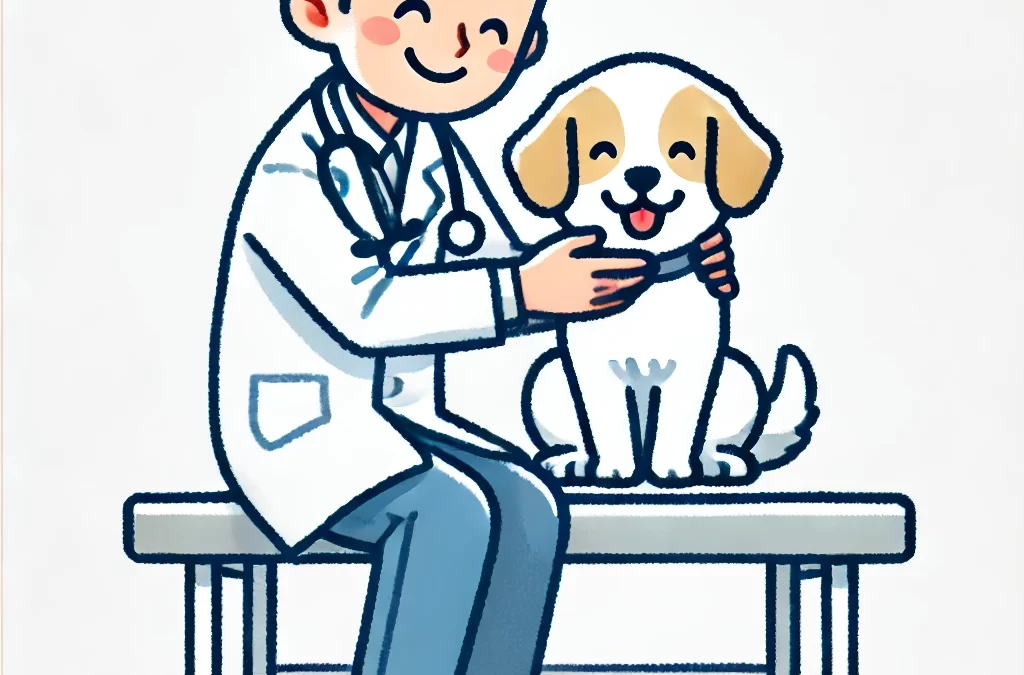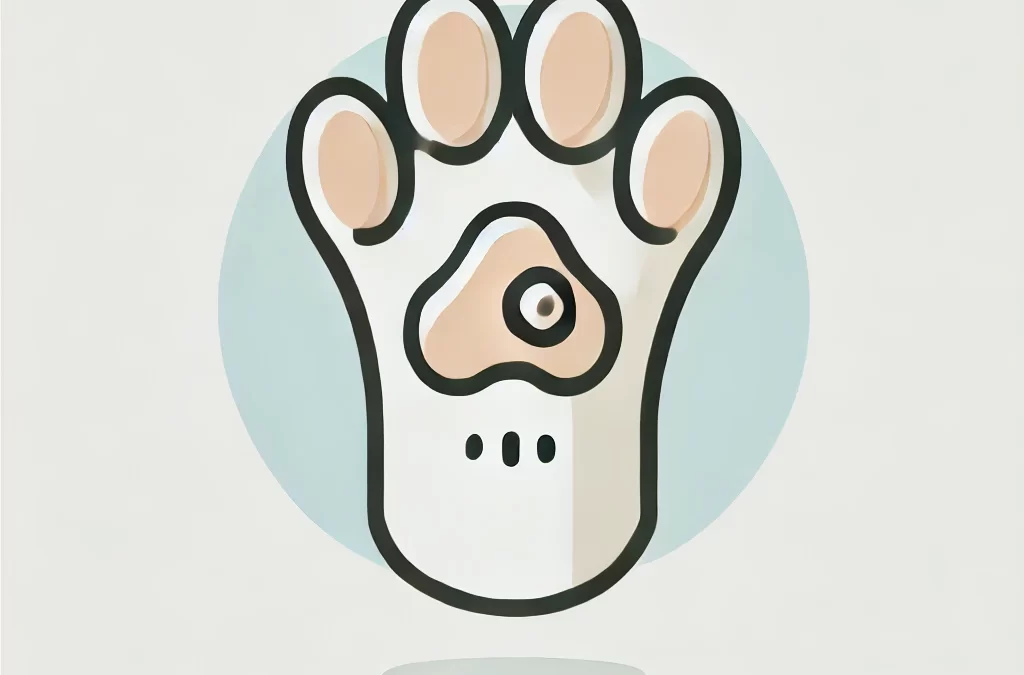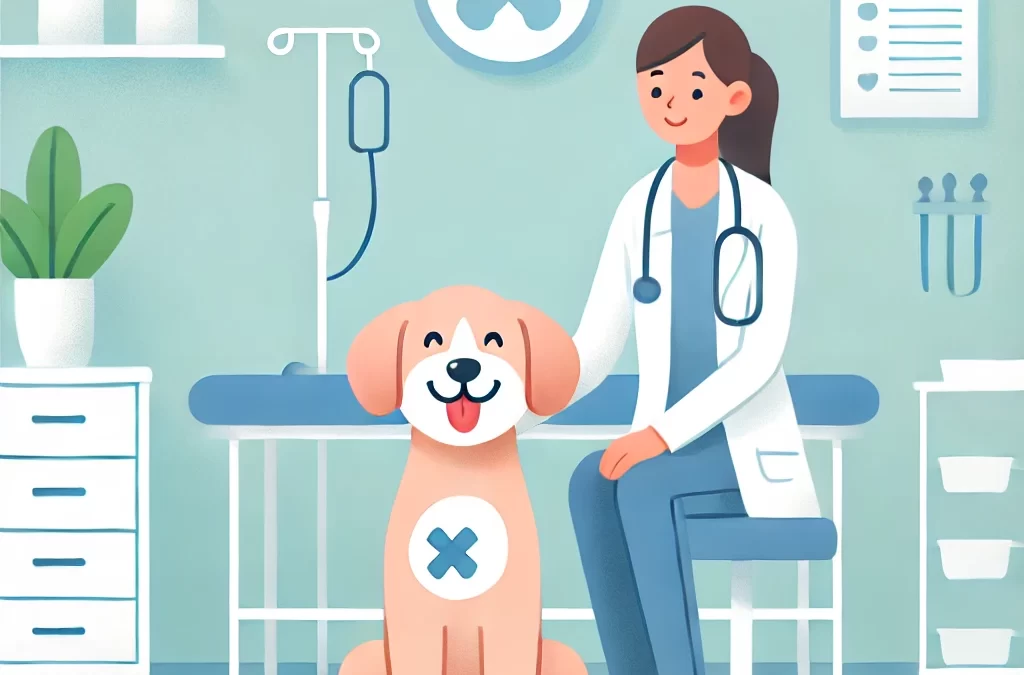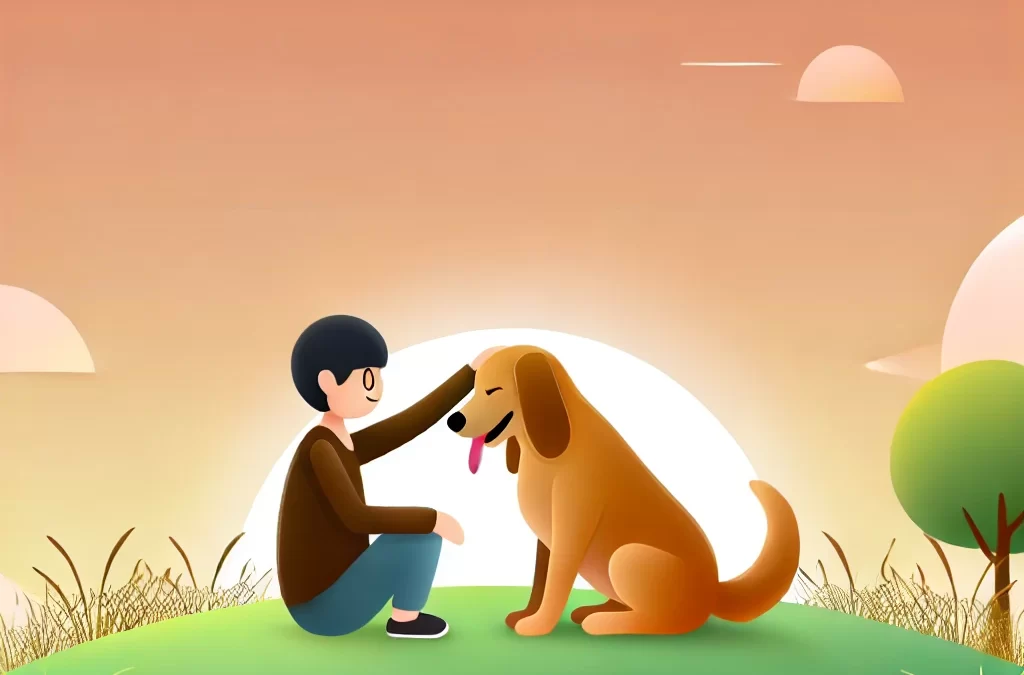
執筆者 TCMVET | 2024年11月29日 | 犬の癌と腫瘍
犬の腫瘍診断による精神的および経済的負担に直面した多くの飼い主は、治療にかかる費用に圧倒されてしまいます。しかし、適切なリソースと少しの創造性があれば、低コストで犬の腫瘍を除去することは可能であるだけでなく、実現可能です。このガイドでは、財布に負担をかけずに愛犬に必要なケアを確実に受けさせるユニークで実用的な方法を紹介します。
腫瘍の種類と切除の必要性を理解する
すべての腫瘍がすぐに外科的介入を必要とするわけではありません。脂肪腫(良性の脂肪腫瘍)など、犬の健康にほとんどまたはまったく脅威を与えない腫瘍もあります。獣医師に相談して腫瘍の性質を評価することが、情報に基づいた決定を下すための第一歩です。切除が必要と判断された場合は、費用対効果の高い解決策を検討して問題を解決してください。
手頃な価格で犬の腫瘍を除去するための創造的なアプローチ
獣医学校:学習と貯蓄
獣医教育病院では、経験豊富な専門家の指導のもと学生が手術を行うため、低コストのサービスが提供されることがよくあります。コストが削減されても、ケアの質は高いままであるため、予算を重視するペットの飼い主にとって最適な選択肢となります。
非営利獣医クリニック
多くの非営利団体や動物福祉団体が、腫瘍の除去を含む獣医治療の補助金を提供しています。Humane Society や SPCA 支部など、低所得のペットの飼い主を支援する地域の団体を調べて、経済的援助を受けられるかどうかを確認してください。
クラウドファンディングプラットフォーム
GoFundMe や Waggle などのプラットフォームでは、ペットの飼い主が愛犬のストーリーを共有し、治療費を募ることができます。心のこもったストーリーや写真は、寄付者がペットの健康のために寄付をしてくれるよう促すことができます。
地元の獣医との支払いプラン
一部の獣医クリニックでは、高額な手術に対して分割払いプランを用意しています。このオプションを利用すると、費用を数か月に分割して支払うことができ、当面の経済的負担を軽減できます。
DIY 回復とアフターケア
手術自体は必ず資格を持った獣医師が行うべきですが、自宅で術後のケアを管理することで費用を節約できます。傷口の洗浄方法、投薬方法、犬が快適に回復できるスペースの作り方を学んで、追加の通院を最小限に抑えましょう。
代替策の検討: 手術が選択肢にない場合
手術が経済的に難しい場合や、犬の健康状態により手術が推奨されない場合は、代替療法で腫瘍を管理できます。ホリスティックな選択肢には次のようなものがあります。
- ハーブサプリメント: ウコン、フランキンセンス、川芎などの中医学の処方などの自然療法は、抗炎症作用があることで知られています。
- CBD オイル: フルスペクトル CBD オイルは炎症を軽減し、全体的な健康をサポートする可能性があります。
- 食事の調整: 完全食品、低炭水化物、高タンパク質食品に重点を置いた抗がん食は、腫瘍の成長を遅らせる可能性があります。
将来のコストを回避するための予防措置
予防ケアは、そもそも腫瘍が形成される可能性を減らすことができます。定期的な獣医の診察、バランスの取れた食事、タバコの煙などの発がん物質への曝露を避けることは、犬のより健康的な生活を促進することができます。早期発見が鍵です。小さな腫瘍は、進行した腫瘍よりも一般的に治療が簡単で費用もかかりません。
思いやりと創意工夫:手頃な価格の医療の鍵
犬の腫瘍を除去する低コストの選択肢を見つけるには、機知と決断力が必要です。非営利団体、コミュニティのサポート、代替療法を活用することで、経済的に困ることなく愛犬に必要なケアを確実に受けることができます。あなたの創造性とペットへの愛情が、思いやりのある効果的な解決策への道を切り開くことを忘れないでください。
手頃な価格のケア提供者のネットワークに繋がるにしても、総合的なアプローチを採用するにしても、犬の健康は乗り越えられないほどのコストがかかるものではありません。この旅を通して、ペットと飼い主の揺るぎない絆、つまりあらゆる努力に値する関係を思い起こしましょう。

執筆者 TCMVET | 2024年11月28日 | 犬の癌と腫瘍
愛犬が足を引きずったり、足を過度に舐め始めたりしたら、その原因は趾間嚢胞かもしれません。これはよくある症状ですが、心配な症状でもあります。これらの嚢胞は通常は良性ですが、その見た目から飼い主は「これは癌のようなもっと悪性の兆候なのではないか」と疑問に思うことがあります。このトピックを新鮮な目で掘り下げ、違いや潜在的な関連性、そして愛犬の健康のためにこれらの問題に最もよく取り組む方法を探ってみましょう。
趾間嚢胞とは何ですか?
趾間嚢胞は、犬の足指の間にできる液体で満たされた塊で、フルンクルとも呼ばれます。これは、趾間腔の毛包の炎症によって生じ、多くの場合、以下の原因で発生します。
- Trauma: 足に切り傷や擦り傷がある。
- アレルギー: 環境アレルギーまたは食物アレルギーにより、過度な舐め行動が起こります。
- 遺伝的素因ブルドッグやラブラドールレトリバーなどの特定の犬種は、よりその傾向が強いです。
- 異物: 破片や破片が皮膚に埋め込まれます。
趾間嚢胞は通常は非癌性ですが、再発性のため不快感、感染症、さらには跛行を引き起こす可能性があります。
趾間嚢胞は癌と関係があるのでしょうか?
簡単に答えると、まれではあるが、まったく不可能というわけではない。
趾間嚢胞のほとんどは良性で、癌とは関係ありません。しかし、持続性嚢胞によって引き起こされる慢性炎症は、時間の経過とともにより深刻な状態につながる環境を作り出す可能性があります。この現象は、 慢性炎症による発癌は、長期にわたる刺激が組織の悪性変化のリスクを高める可能性があることを強調しています。
さらに、非常にまれなケースでは、最初は嚢胞と特定されたしこりが、実際には次のようなより深刻なものである可能性があります。
- Squamous Cell Carcinoma (SCC)足の裏や足指の間に発生する可能性のある皮膚がんの一種。
- 肥満細胞腫(MCT)これらの腫瘍は、他の場所にもよく見られますが、足のような珍しい場所に現れることもあります。
- 悪性黒色腫悪性黒色腫は、肉球の近くに現れ、嚢胞のような腫瘍のように見えることもあります。
嚢胞と癌の見分け方
適切な診断が重要です。注意すべき点は次のとおりです。
- 形状と質感嚢胞は通常柔らかく、丸く、液体で満たされています。腫瘍は硬く不規則な感触になることがあります。
- 成長率良性の嚢胞はゆっくりと成長しますが、悪性の腫瘍は急速に成長することが多いです。
- 色と潰瘍: 癌性腫瘍は変色したり、潰瘍ができたり、自然に出血したりすることがあります。
- 治療に対する反応嚢胞は抗生物質、抗炎症薬、または排液に反応することが多いですが、癌性腫瘍は反応しません。
獣医師は、腫瘍が良性か悪性かを確認するために、穿刺吸引細胞診(FNA)や生検などの診断検査を勧める場合があります。
足の健康のための総合的かつ予防的なケア
嚢胞が非癌性であっても、予防と総合的なケアによって犬の生活の質を向上させることができます。
- 足の衛生: 定期的に掃除することで、犬の足に異物が挟まるリスクを軽減できます。
- 食事の調整オメガ 3 脂肪酸と抗炎症サプリメントは炎症を軽減し、肌の健康を促進します。
- Natural Remedies: Products like TCMVET 白頭霄 または、ウコンベースのクリームは再発性嚢胞の炎症を軽減するのに役立つ可能性があります。
- 適度な運動: 外傷を受けやすい活発な犬の場合は、切り傷や擦り傷を避けるために、散歩には柔らかい地面を検討してください。
手術や高度な治療が必要な場合
持続性または複雑な嚢胞の場合、影響を受けた組織を除去するために手術が必要になることがあります。まれに悪性腫瘍が疑われる場合は、がんの拡散を防ぐために影響を受けた足指の切断が必要になることがあります。レーザー手術や凍結療法などの高度な治療法も、特定のケースでは非侵襲的な解決策となります。
まとめ: 知識は力である
趾間嚢胞は一般的で、ほとんどが良性ですが、決して無視してはいけません。注意を怠らず、獣医に相談し、積極的なアプローチをとれば、犬の足の健康を保つのに大いに役立ちます。また、がんの恐れが生じた場合でも、早期発見と最新の治療で有望な結果が得られることを覚えておいてください。
私たちの愛犬は、世話と保護を私たちに頼っています。趾間嚢胞などの病気の微妙な違いを理解することで、愛犬が長く健康で幸せな生活を送るための最善のチャンスを与えることができます。

執筆者 TCMVET | 2024年11月28日 | 犬の癌と腫瘍
愛するペットに腫瘍があると診断されると、精神的に追い詰められるような気分になります。手術は希望の焦点となることがよくありますが、それが常に最善の選択肢なのでしょうか? ペットの腫瘍手術の変革の過程、状況を変える代替手段、そしてホリスティックケアが私たちの愛するペットの癒しをどのように再定義しているかを探ってみましょう。
歴史的視点:命を救う手術
獣医学の初期の頃は、腫瘍に対する決定的な治療法は手術でした。技術の進歩により、レーザー手術やロボット支援などの技術が一般的になり、手術はより安全で正確になりました。たとえば、今日のペットの腫瘍手術では、腫瘍を除去しながら健康な組織を温存し、わずか 1 ミリメートルのマージンを実現できます。
しかし、外科手術にはリスクがないわけではありません。ペットの年齢、腫瘍の大きさや位置、基礎にある健康状態などの要因がすべて成功率に影響します。腫瘍の除去には効果的ですが、手術は症状のみに対処するもので、根本的な原因に対処するものではありません。
代替案: 選択肢の拡大
手術は依然として基礎的な手段ですが、代替アプローチも注目を集めています。
- 凍結療法極度の低温を利用して腫瘍細胞を凍結・破壊するこの方法は、侵襲性が低く、表面的な腫瘍に最適です。
- 標的療法免疫療法や分子標的薬などの獣医学の革新により、非外科的腫瘍管理が可能になりつつあります。これらの治療は、腫瘍を縮小するか、進行を遅らせることを目的としています。
- 自然療法: ハーブ療法のような TCMVET 白頭霄 麻ベースのサプリメントは、副作用を最小限に抑えながら免疫システムをサポートし、腫瘍の成長を抑制する能力があるため、人気が高まっています。
- 緩和ケア: 手術不能な腫瘍を持つペットにとって、快適さが最優先となります。痛みの管理、食事の調整、理学療法は、生活の質を維持する上で重要な役割を果たします。
決断を検討する: 削減するか、削減しないか?
手術か代替療法かの選択は、複数の要因によって決まります。
- 腫瘍の種類良性腫瘍の場合はすぐに手術を行う必要はありませんが、悪性腫瘍の場合は迅速な処置が必要になることがよくあります。
- 生活の質: この処置によってペットの健康状態が改善される可能性はありますか、それとも過度のストレスや痛みを引き起こす可能性がありますか?
- オーナーの目標: 寿命を優先する飼い主もいれば、快適さと総合的なケアを重視する飼い主もいます。
ペットの独自のニーズを考慮したカスタマイズされた治療計画を確実に立てるためには、獣医腫瘍専門医との相談が不可欠です。
ホリスティックヒーリング:メスを超えて
手術後のケアは手術そのものと同じくらい重要です。回復計画には、総合的な方法が取り入れられることが多くなってきています。
- 栄養療法抗酸化物質、オメガ 3 脂肪酸、抗がん化合物を豊富に含む食事が極めて重要です。
- 鍼灸とマッサージこれらの療法は痛みを和らげ、血行を促進し、治癒を早めます。
- 心の支え: ペットも人間と同様、回復中はストレスのない環境から恩恵を受けます。充実した時間を過ごしたり、優しく遊んだり、日課を維持したりすることで、ペットの気分は高揚します。
ペット腫瘍手術の未来
獣医腫瘍学の分野は急速に進化しています。AI 誘導診断や 3D プリント手術ツールなどのイノベーションにより、さらに正確で効果的な介入が可能になります。さらに、ペットの腫瘍の遺伝的基礎に関する研究により、予防戦略への道が開かれています。
こうした進歩が進むにつれ、ペットの腫瘍手術をめぐる見方は、恐怖から希望へ、反応的なケアから積極的なケアへと変化しています。
最後に
手術を選択する場合でも、代替手段を検討する場合でも、最終的な目標は常に同じです。ペットに可能な限り最高の生活を与えることです。思いやり、情報に基づいた意思決定、最先端のケアへのアクセスがあれば、私たちはこの困難な時期を乗り越え、一緒により強くなることができます。
腫瘍の診断に直面したとき、あなたはペットの擁護者であり、最大の擁護者であることを忘れないでください。あなたが下すすべての決定は愛から来るものであり、それがすべてを左右します。

執筆者 TCMVET | 2024年11月27日 | 犬の癌と腫瘍
チギラノール チグラートは、特定の種類の犬の腫瘍に対する画期的な治療法であり、獣医腫瘍学に革命をもたらしました。ペットの飼い主がこの革新的な治療法を検討する中、その費用を心配する人が多くいます。しかし、費用に関する議論は金銭的な数字だけにとどまるものではありませんか? チギラノール チグラートの価値に関する独自の視点を掘り下げてみましょう。費用だけでなく、その見返りとして何が得られるかを見てみましょう。
チギラノール・チグラ酸について理解する
ブラッシュウッドの種子から開発されたチギラノールチグレート(Stelfonta® として販売)は、犬の肥満細胞腫に対する非外科的治療薬です。注射で投与すると、腫瘍細胞を破壊し、傷の治癒を促進し、数日以内に目に見える効果が現れます。この革新的な治療法は、年齢、健康状態、腫瘍の位置などの理由で手術が不可能な犬にとって特に魅力的です。
経済的コスト
チギラノールチグレートの価格は、いくつかの要因に応じて大きく異なります。
- 腫瘍の大きさ
薬の価格は、腫瘍の体積によって決まる投与量に基づいて決まる。腫瘍が大きいほど投与量も高くなり、コストも高くなる。
- 獣医費
治療にかかる費用には、治療前の評価、鎮静、治療自体、およびフォローアップケアが含まれます。これらの専門家の料金は、場所やクリニックによって異なります。
- 治療後のケア
多くの犬はすぐに回復しますが、中には追加の傷の管理が必要になる犬もおり、全体的な費用が増加する可能性があります。
平均的に、チギラノールチグレート治療の費用は $500から$2,500 上記の要因に応じて、またはそれ以上になります。
感情的なコスト
金銭的な出費は大きいですが、愛するペットの治療に伴う精神的負担も考慮する必要があります。チギラノール チグラートは侵襲的手術に代わる魅力的な治療法であり、ペットと飼い主の両方のストレスと回復時間を軽減します。
- 犬の不安を軽減
手術は、特に高齢の犬の場合、回復期間が長く、リスクも高くなることがよくあります。チギラノール チグラートは、これらの問題を最小限に抑え、より侵襲性の低いソリューションを提供します。
- オーナーの安心
腫瘍がリアルタイムで縮小していく様子を見るのは、精神的に満足できる体験です。多くの人にとって、目に見える即時の結果によってコストは正当化されます。
コストと価値
チギラノール チグレートの価格を評価する際には、その価値を考慮することが重要です。
- 生活の質: この治療は、手術に伴うリスクなしに犬の健康を維持し、向上させることに重点を置いています。
- 節約できる時間: 1 回の注射で治療できるため、長い回復期間が必要なくなることがよくあります。
- 感情的な安らぎ: 愛犬の診断の重荷に苦しんでいる飼い主にとって、急速な改善が見られることは非常に貴重です。
隠れた節約
初期費用は高額に思えるかもしれませんが、チギラノール チグレートは間接的な節約をもたらします。
- 手術に伴う合併症およびそれに伴う費用を回避します。
- 腫瘍管理のための継続的な治療や投薬の必要性が減少します。
- 早期介入による将来の腫瘍関連の問題の予防。
チギラノール チグレートの購入:ペットの飼い主のためのヒント
手頃な価格を気にする人のために、検討すべきヒントをいくつか紹介します。
- Pet Insurance: あなたの保険がチギラノール チグレートのような高度な治療をカバーしているかどうかを確認してください。
- Payment Plans: 多くの獣医クリニックでは、費用管理に役立つ分割払いプランを提供しています。
- 非営利団体への支援: ペットケアを専門とする団体は、緊急治療のための資金援助を提供することもあります。
- 今後の予算編成: ペットの健康管理のための資金計画を早めに立てておくと、予期せぬ出費の負担を軽減できます。
最終的な考え
チギラノール チグレートの費用は単なる数字ではありません。希望、革新、ケアの尺度です。この治療法はすべての予算に合うわけではありませんが、肥満細胞腫の治療に低侵襲で効果的な選択肢を提供することで、犬とその家族に比類のない価値をもたらします。多くの人にとって、問題は「費用はいくらか」ではなく、「治療を試みないことの代償はいくらか」です。
愛犬の治療を進める際には、治療費にはかかった費用だけでなく、一緒に過ごす時間も含まれることを忘れないでください。チギラノール チグラートは、より多くの犬がより健康で幸せな生活を送れる未来、つまり愛、長寿、そして友情への投資を表しています。

執筆者 TCMVET | 2024年11月27日 | 犬の癌と腫瘍
がんと診断された愛犬にいつ別れを告げるかを決めることは、ペットの飼い主が直面する最も難しい決断の 1 つです。ケースはそれぞれ異なりますが、この記事では、この感情的なテーマについて別の視点を提示し、愛、生活の質、そして手放す前に意味のある思い出を作ることに焦点を当てています。
愛犬の旅を理解する
がんを患った犬は、人間と同様に、さまざまな身体的、精神的状態を経験します。犬の状態を理解することで、情報に基づいた決定を下すことができます。
- 痛みのレベル: 痛みは多くの場合、最初の兆候です。緩和ケアの進歩にもかかわらず、犬によっては持続的な不快感を感じる場合があります。
- モビリティの問題: 犬が散歩や遊びなどの活動をまだ楽しめるかどうか観察してください。運動能力の低下は、生活の質の低下を意味する場合があります。
- 食欲の変化: 突然、食べたり飲んだりすることを拒否するということは、身体が機能停止していることを意味する可能性があります。
- 感情の変化: 犬は感情的な生き物です。あなたの犬が引きこもったり、不安になったり、周囲に興味を示さなかったりしているかどうかに注意してください。
新しいフレームワーク:「5つの喜び」アプローチ
衰えだけに焦点を当てるのではなく、犬の生活の質を評価するために次のアプローチを検討してください。自分自身に問いかけてください。
- 食べること: あなたの犬は今でも好きな食べ物を楽しんでいますか?
- 快適な睡眠: 痛みや苦痛の兆候もなく休んでいますか?
- 社会的交流: 彼らは仲間を求めているのでしょうか、それとも撫でられるのを楽しんでいるのでしょうか?
- プレイ中: 彼らは、たとえ限られた形でも、自分の好きな活動に取り組んでいますか?
- 探索中: 彼らは周囲の環境に興味を示していますか?
これらの喜びのうち 3 つ以上が継続的に失われている場合は、安楽死を検討する時期かもしれません。
別れを告げる:総合的なアプローチ
別れを告げることは、一つの章の突然の終わりのように感じる必要はありません。移行をスムーズにしながら、愛犬の旅路を尊重する方法は次のとおりです。
- バケットリストを作成する
喜びの瞬間を作り、愛犬の人生を祝いましょう。それは、愛犬のお気に入りの公園でピクニックをしたり、特別なおやつを分け合ったりするといった簡単なことでも構いません。
- 快適さを重視
落ち着いた、慣れ親しんだ環境を提供してください。心地よい寝具、優しいマッサージ、アロマセラピーなどを利用して、ストレスを和らげてください。
- 信頼できる獣医とコミュニケーションをとる
思いやりのある獣医師は、衰えの兆候を認識し、安らかな死を迎えるための計画を立てるのを手伝ってくれます。
- 自宅での安楽死を検討する
多くのペットの飼い主は、自宅での安楽死サービスを選択し、愛犬が慣れ親しんだ環境で、愛する人たちに囲まれて亡くなることを許しています。
- 彼らの遺産を守る
足跡の型や大切な写真のスクラップブックなど、記念品を作りましょう。愛犬の生涯を祝いながら悲しみを乗り越えるのに役立ちます。
最後の別れを再定義する
安楽死は単なる臨床的な決定ではなく、愛の行為です。愛犬を安らかに逝かせることを選択することは、愛犬に不必要な苦しみを与えず、愛犬の尊厳を尊重することにつながります。「いつ逝かせるか」に焦点を当てるのではなく、「愛犬の最期の瞬間をいかに意味のあるものにするか」に視点を移しましょう。
教訓:悲しんでも大丈夫
悲しみは、このプロセスにおける自然な一部です。それは、あなたが愛犬と共有していた深い絆の証です。あなたが経験していることを理解し、友人、家族、あるいはペット愛好家のオンライン コミュニティからサポートを求めてください。
結局のところ、決断は極めて個人的なものです。自分の直感を信じ、愛犬のユニークな旅路を尊重し、時間ではなく愛がペットとの関係を決めるということを理解してください。

執筆者 TCMVET | 2024年11月26日 | 犬の癌と腫瘍
ペットの飼い主が「腫瘍」という言葉を聞くと、腹にパンチを食らったような気分になります。疑問が次々と湧いてきます。「癌なのか?うちの犬は大丈夫なのか?」そして最も重要なのは、 何を手伝えばいいでしょうか? 現代の獣医学ではさまざまな治療法が提供されていますが、多くの飼い主は伝統的な治療を補完するために自然で総合的なアプローチに目を向けています。犬の腫瘍を管理し、縮小させるのに役立つ、革新的であまり知られていない選択肢をいくつか見てみましょう。
犬の腫瘍の性質
犬の腫瘍は、良性の脂肪腫から肥満細胞腫や骨肉腫などの悪性癌まで多岐にわたります。治療計画は腫瘍の種類、大きさ、進行度によって異なりますが、腫瘍に対処するには、従来の治療法(手術や化学療法など)と全体的な健康を高めるための支持療法を組み合わせることがよくあります。
しかし、ここに落とし穴があります。すべての治療が侵襲的であったり合成的である必要はありません。自然は、犬の健康をサポートしながら腫瘍を縮小させるのに役立つ資源の宝庫を私たちに提供してくれています。
栄養補給:食べ物は薬
- キノコのパワーハウス
薬用キノコ類 椎茸, 霊芝そして ターキーテール ベータグルカンが豊富に含まれており、免疫系を調整し、腫瘍の成長を遅らせる可能性があります。獣医腫瘍学の研究では、これらの菌類が特定の癌の進行を遅らせる可能性があることが示唆されています。犬の食事に粉末キノコサプリメントを少し振りかけると、状況が一変する可能性があります。
- ゴールデンペースト(ターメリックブレンド)
ウコンはその活性化合物で知られています。 クルクミン強力な抗炎症作用と抗酸化作用を持つクルクミン。いくつかの研究では、クルクミンは癌細胞の増殖を阻害することが示されています。ターメリックパウダーをココナッツオイルと黒コショウと混ぜて、犬に優しい黄金色のペーストを作りましょう。
- オメガ3脂肪酸
魚油や亜麻仁に含まれるオメガ 3 は、腫瘍の成長を遅らせ、全体的な健康をサポートする天然の抗炎症剤です。犬の食事にオメガ 3 を加えるだけで、シンプルながらも効果的な栄養補給になります。
腫瘍管理のための天然サプリメント
- CBDオイル
カンナビジオール (CBD) は、その抗腫瘍効果の可能性から注目を集めています。がん細胞にアポトーシス (プログラム細胞死) を誘導し、炎症を軽減すると考えられています。必ず THC を含まないペット専用の CBD オイルを選択し、適切な投与量については獣医に相談してください。
- エシアックティー
ゴボウ、ニレ、ヒツジスイバなどのハーブをブレンドしたエッサイア ティーは、腫瘍の自然療法として長い間使用されてきました。液体またはカプセルの形で提供されており、体内の毒素を除去し、異常な腫瘍を縮小させる効果があると考えられています。
- チュアンシオン(四川ラビジン)
あまり知られていないが、強力な伝統的な中国のハーブである川芎には、血行を改善し、炎症を軽減する特性があります。一部のホリスティック獣医師は、腫瘍を管理するためのハーブ療法の一部として川芎を推奨しています。
ホリスティックセラピー
- 鍼治療
鍼治療は腫瘍を直接縮小させるわけではありませんが、血流を改善し、痛みを軽減し、他の治療の効果を高めることができます。多面的なケアプランに追加すると効果的です。
- 高圧酸素療法(HBOT)
腫瘍は酸素の少ない環境で増殖します。高圧酸素療法は体内に酸素を充満させ、腫瘍の成長を遅らせ、治癒を促進する可能性があります。
ライフスタイルの調整
- 食生活の見直し
低炭水化物、高タンパク質の食事は、成長に糖分を必要とする特定の腫瘍を飢えさせることができます。犬の特定のニーズに合わせた生食または調理済みの食事を検討してください。
- ストレス軽減
慢性的なストレスは免疫系を抑制し、犬が病気と闘うことを困難にします。犬の環境が穏やかで、犬が楽しめるアクティビティが充実していることを確認してください。
- 環境の浄化
農薬、合成芳香剤、加工食品などの有害な化学物質への曝露を減らしてください。これらの環境毒素は犬の体に負担をかけ、回復を困難にします。
現代的アプローチと自然的アプローチを組み合わせる力
自然療法は素晴らしい効果をもたらしますが、すべての犬に単独で有効な解決策ではありません。統合的ケアを理解している獣医と協力することが重要です。これにより、あなたの犬は、現代医学の命を救う力と自然療法の優しいサポートという両方のメリットを確実に受けることができます。
明るい見通し
腫瘍の診断を受けた犬を助ける旅は、気が遠くなるような気がしますが、覚えておいてください。あなたは一人ではありません。食事の変更、天然サプリメント、ホリスティック療法を組み合わせることで、犬に闘うチャンスを与え、生活の質を向上させることができます。
時には、ほんの少しの変化、例えばターメリックを少し、キノコパウダーをスプーン一杯、CBDを一滴加えるだけでも、大きな違いが生まれることがあります。






